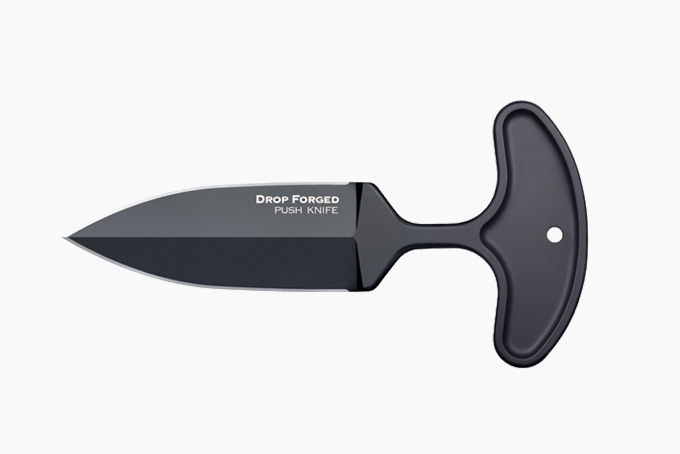
There are many kinds of concealed carry knives. They are easy to use and efficient. There are many options for blade designs that will suit your needs. It is easy to conceal and carry the knife's overall design. No matter what type of knife you choose to carry, it is important that you are familiar with the laws of your state.
Concealed carry laws restrict knife carrying
There are many laws that govern concealed carry knives. Many times, concealed carry knives laws only apply to federal property owners or people who cross state borders. In other states, concealed carry knives are allowed only in certain locations, such as private residences. However, in New York, the knife law is incredibly restrictive for many individuals.
However, not all states prohibit pocketknives. For example, in Nevada, knives are prohibited for those with felonies or restraining orders. New Jersey also has specific rules about knife ownership. Utah, Oregon, and Utah ban felons from owning knives. Additionally, Wisconsin and Wyoming don't allow carry knives for some people based on their criminal history or mental state.

Types of concealed carry knives
There are many types of concealed carry knives available. Each one is different and each has different benefits. For example, some knives are made specifically for self defense and others for combat. You can even find knives that are suitable for daily use. It is important to check the legal status of your state before you purchase a knife. The knife's blade length and type should meet the laws of your jurisdiction.
Some knives are banned. Michigan, for example, has its own laws on knives. Some knives, like hunting knives, can be carried while others are strictly prohibited. Some knives cannot be carried on the streets. You can't carry a dirk, or stiletto while you walk in New York City. Other types of knives, such as ballistic knives or double-edged non-folding knives, are also not allowed.
Concealed carry of knives is legal in different states
If you are planning on carrying a concealed carry knife in America, you will need to be aware of the legalities in each state. Knives may be considered dangerous weapons in some states. If this happens, you could face criminal prosecution. There are exceptions to the rule. Wyoming for example, does not consider knives smaller than three inches dangerous weapons. Pocketknives are also allowed to be carried openly in Washington. It is important to be aware that pocketknives can cause discomfort and even get you into trouble.
Although knife laws in Tennessee were complicated and confusing in the past they have become more straightforward in recent years. There are no per se laws that restrict the ownership and transportation of pocketknives in Tennessee. Although you should still be familiar with the laws of each state before you carry a knife, Tennessee is the least restrictive when it comes blade laws.

Techniques for concealing a knife
It takes planning and careful thought to carry a knife for self defense. You will also need to be willing to train and make decisions. It depends on what situation you are dealing with. You may want to carry the knife vertically or horizontally. To horizontally carry the knife, you need to place the handle in front of you.
Concealed carry is legal in certain areas. It is a good idea to review the permit requirements and regulations for concealed blades. Fixed-blade EDCs with a maximum length of three inches are recommended. It is also a good idea to conceal your knife with a pocket knife or swiss army knife.
FAQ
Can I be charged with using my stungun?
No. Stun guns have been deemed "less lethal" weapons. They are not likely to cause serious injury.
You could be charged even if your stun gun accidentally hits someone.
Do stun guns hurt people?
But it's not. A stun gun works by shooting a small amount of current into the skin.
It doesn't cause permanent harm.
How do beginners do self-defense?
Not only are experts trained in self-defense, but so is everyone else. It is important to learn how to defend oneself when you are on your own. Learn some basic techniques to defend yourself from an attack.
Start with simple moves such as punching, kicks, and kneeing. Then, you can move on to more complex moves like grappling or joint locking.
It's always helpful to practice similar things to what you would face in real-life situations. You should try to learn how you can kick someone on a soft surface like a pillow.
So you don't get hurt while practicing. You should also be careful not to hit any object hard, as you could break it.
Statistics
- Kung Fu alone has 400 unique martial art styles – and whilst you likely won't be able to find a school for each form, many other martial arts are completely different altogether. (budodragon.com)
- Some people walk into a gym thinking they are going to become the best by training whenever they like and not putting 100% effort in. (budodragon.com)
- Boxers aren't allowed to fight in a clinch, which is a position that occurs in 80% of the streetfights. (mmaclan.com)
- Most likely, the person will want some kind of boxing match, so if you can out-box them, this would be 100% ideal for survival. (budodragon.com)
External Links
How To
How to Survive a Home Invasion
Home invasion is scary, especially for children. When we began our home security system installation journey, we didn't realize we'd live through it ourselves. Here's the information we've gleaned so far.
-
You must not allow your kids to see the attackers. Two men broke into the house while our children were sleeping upstairs. We took them downstairs until they arrived at the police station. They didn't harm our kids, but it was enough to traumatize them.
-
Lock all valuables. All valuables are kept in a safe in the bedroom. Even if someone breaks into the house, they won't be able to access it.
-
Keep an eye out on burglars. We live in a neighbourhood that is notorious for burglaries. We are always on the lookout for suspicious cars and people.
-
Always have a backup plan. We will provide financial support for our family in the event of an emergency. We also have a plan to leave the country if necessary.
-
Prepare. Prepare for anything. You should always have water and food on hand.
-
Get help immediately by calling 911. After you discover that someone is breaking into your home, immediately call 911. It's better to call the authorities than to wait for them to break down your door.
-
Use common sense. Do not allow anyone to enter the house if they aren't welcome. Also, don't invite strangers to come over.
-
Seek out help from neighbors and other people in the local area. If you feel unsafe, contact your friends and neighbors. They will be able to watch your back and call the police.
-
Keep Calm and Do What Police Officers Tell You To. Stay calm and do exactly as instructed by officers. Avoid fleeing or resisting arrest
-
Photograph Any Evidence. Photograph all evidence you find during the investigation. This includes fingerprints, blood samples and other items.
-
File A Report With Local Law Enforcement. Even if you are not the victim, it is a good idea to file a report with local law enforcement. It may help you avoid future criminal acts.
-
Get in touch with your insurance company immediately. You should immediately contact your insurance company. Tell your insurance company everything that has happened, and ask them to send an adjuster.
-
Take away personal belongings. Remove personal belongings before leaving the scene. Don't wear expensive jewelry. Take it off and put it away.
-
Take Care of Yourself. Make sure you clean up after yourself. Make sure you empty the trash, clean up any broken glass, and lock all doors.
-
Don't talk about the events. Do not talk about what happened to anyone. You never know who might try to use this information against you later on.